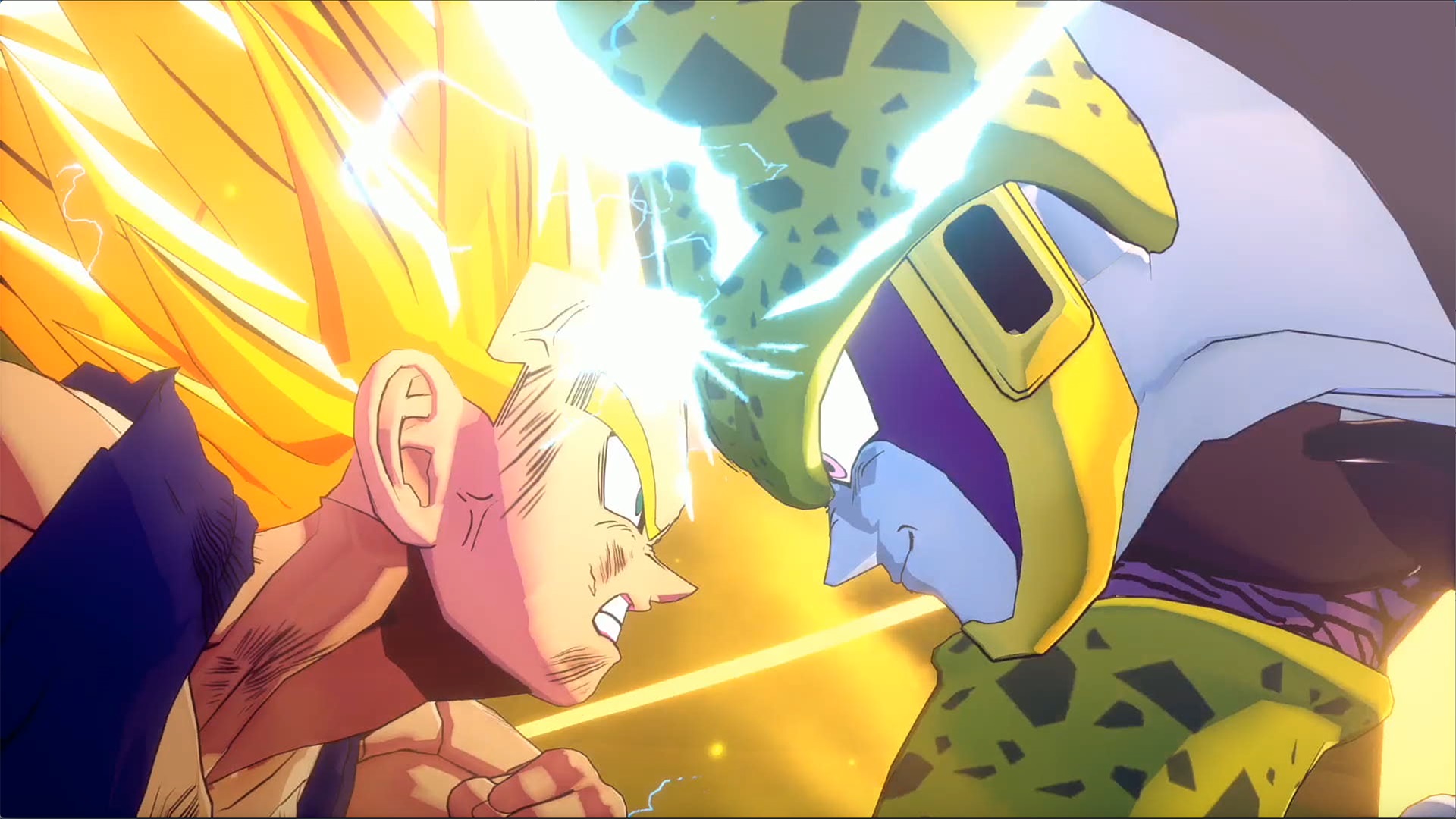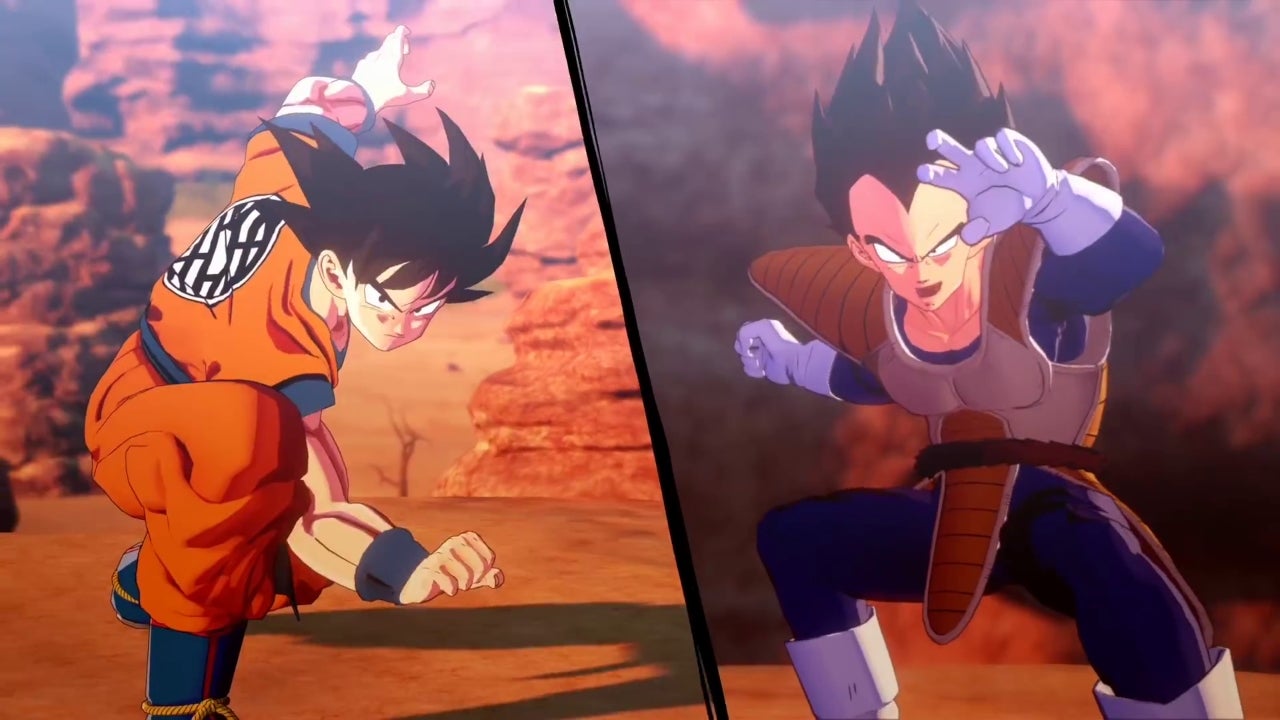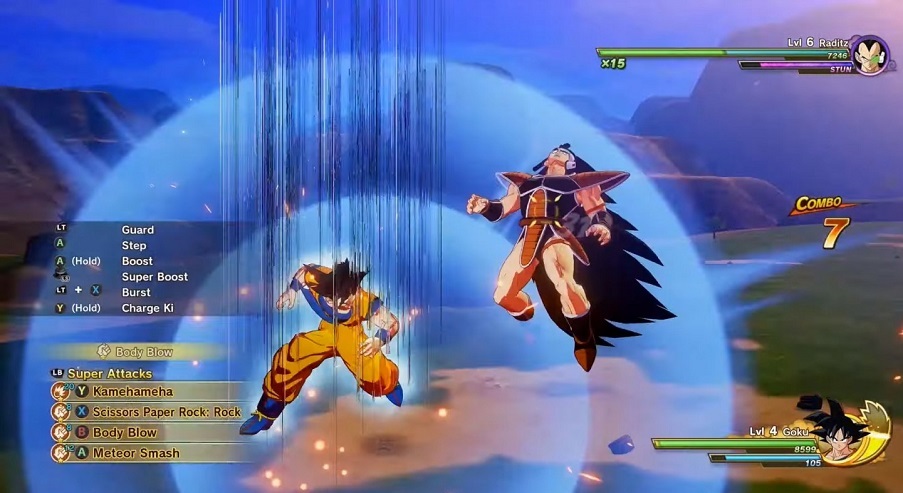Dragon Ball Z has a complicated history with video games. Dating all the way back to the days of the NES and spanning to virtually every major video game console ever made, it has always been around for better and for worse.
DBZ Kakarot tries to be a bit different than the rest with varying degrees of success. Rather than just being a straight-up fighting game, there are large open areas to explore mixed with light RPG elements to break open the formula. It feels more like you’re exploring the world of the anime rather than just punching faces.
Dragon Ball Z: Kakarot Review — Sweet Spot For Hardcore Fans
The majority of what makes Dragon Ball Z “cool” is the action, so naturally, most DBZ games are fighting games. It’s an anime about super-powered space warriors saving the galaxy with their fists and energy blasts, so it translates pretty intuitively. But the anime is also full of exposition, entire episodes devoid of action, and a lot of lore and world-building that’s often forgotten.
Most of the time you play as Goku, but not always. Important characters like Gohan, Piccolo, and more have entire sections of the game dedicated to them, so you’ll get to mix things up here and there. All told, the main story alone lasts close to 30 hours, but you can easily spend upwards of 40 hours in this game completing side content and gathering collectibles.
Combat is pretty straight forward and doesn’t require a whole lot of finesse, but it’s just deep enough to not be boring. There’s a melee button, ki blast button, dodge button, and energy charge button, as well as triggers for things like special attacks and calling in assist attacks from partner characters in fights.
It’s not deep at all and every character plays the same other than their special attacks, but it’s good enough to make it feel like you’re emulating fights from the anime. It doesn’t need to be balanced or intricate since there’s no multiplayer at all, but a bit more nuance would have been nice. On the bright side, you’re always getting new tricks or switching up enemies and settings so it feels fresher than it actually is.
DBZ Kakarot tries to split the difference by offering a healthy dose of all aspects of what makes the IP so popular. In the first two hours, I think I had maybe two fights, one of which was teaching me the controls. After that, things are mixed up quite often so I was never hungry for combat.
You’ll experience the entire anime’s story, from start to finish, across all sagas, major plot points, and even lots of side stories that games never usually touch on. It’s a great nostalgia trip and does an excellent job of making you feel like an active part of events, at least until it plops you into the open environments where things can start to feel a little stiff and empty. There are side quests to do and activities to take part in, but most of them aren’t worth the time.
Authentic in the Right Places
Visually, Dragon Ball Z: Kakarot is one of the best-looking anime adaption games I’ve ever seen. Bandai Namco has done a great job marrying the standard cel-shaded aesthetic with the flashiness of the show in a way that feels authentic but fresh at the same time.
The bright colors and flat textures of the environment end up feeling a bit bland in comparison to the creative character designs and impressive particle effects, but you don’t spend too much time looking at the mountains anyway.
Perhaps what impressed me most about Dragon Ball Z: Kakarot is just how far that authenticity goes. Most DBZ games relegate story beats to textboxes or poorly acted and poorly animated cutscenes. That’s not the case here. Instead, cutscenes replicate iconic moments from the show, nearly shot for shot in some cases, that can feel like pure, unadulterated injections of intense nostalgia.
And for perhaps the first time ever, I’d say the story is actually told well enough that even if you haven’t seen the anime or read the manga you could probably follow what’s going on. However, I still don’t think I’d recommend this game as an entry point to the fiction or something that can stand on its own. If you’re not an existing fan, it’s hard to appreciate the successes as much or overlook the shortcomings as easily.
One of the biggest issues is that all of the dialogue that happens outside of dedicated cutscenes (note: that means most of it) just feels stiff. Character models stand there, motionless, and mouths move but don’t often match the words they’re saying. Voices lack emotion, faces are blank, and it just feels like an afterthought in the grand scheme of what the developers had time to focus on.
Another major problem with DBZ games, and most anime-based games for that matter, is that the source material doesn’t often contain enough variety and depth to entertain players for lengthy stories and once the narrative is told, you’re out of original plots.
Would someone that hasn’t seen the anime get chills when Goku goes Super Saiyan for the first time and sees the disbelief on Frieza’s face? Probably not. Would the subtle references in side quests, silly moments of slapstick comedy that define Goku’s whimsical side, or all of the signature attacks and dramatic cutscenes, carry as much weight? Zero chance.
How do I know? I’ve experienced it: my wife literally fell asleep while watching me stream this back when it first came out.
Dragon Ball Z: Kakarot Review — The Bottom Line
Pros:
- Amazing and vibrant visuals
- Large open areas to explore full of collectibles and side content
- Faithfully recreated cutscenes
- Plenty of attention paid to non-action moments from the anime
Cons:
- A lot of areas feel mostly empty
- Dialogue and animations outside of cutscenes is often stiff
- Combat lacks depth
- Hard to recommend unless you’re a big fan of the anime
For better and for worse, Dragon Ball Z: Kakarot can be thoroughly categorized as unabashedly authentic and true to its source material. As a lifelong fan of Dragon Ball and Dragon Ball Z, I had a blast replaying the story for the millionth time. With this game, everything felt different, and it delivered the action-adventure RPG with lavish cutscenes I’ve been yearning for since I was 10.
As much as I’d like to say this is the best DBZ game ever made or recommend it to anyone and everyone, I can’t. But if you’re a big fan of the show or manga and have always wanted to play something in this world that wasn’t just a fighting game with lame dialogue boxes masquerading as “story” moments, then you’ve come to the right place.
For more on Dragon Ball Z: Kakarot, make sure and check out our beginner’s guide that’s full of tips for combat and other parts of the game.
[Note: A copy of Dragon Ball Z: Kakarot was provided by Bandai Namco for the purpose of this review.]










Published: Jan 31, 2020 04:51 pm